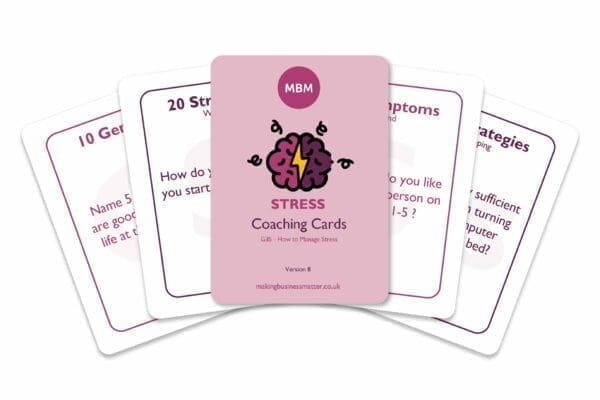Unleashing the Transformative Power of a Bright Mindset
In the dynamic landscape of today’s corporate world, where challenges and opportunities walk hand in hand, the power to think positively has never been more crucial. In turn, HR Managers, Account Managers, L&D Managers, and Category Managers are increasingly recognising that fostering a culture of positive thinking is not just beneficial but essential. After all, it’s the fuel that drives innovation, resilience, and growth. As professionals in these roles, nurturing this mindset becomes both a responsibility and an opportunity. This article explores the transformative power of positive thinking in corporate settings.
What Does It Mean to Think Positively

To start, positive thinking in the workplace goes beyond mere optimism. It’s about creating a constructive atmosphere where challenges are viewed as opportunities, failures as lessons, and successes as stepping stones for further achievements. And as Winston Churchill once said;
The positive thinker sees the invisible, feels the intangible, and achieves the impossible.”
The Impact on Team Dynamics
Team dynamics can be significantly influenced by the mindset of ‘think positively’. How do you ask? Well, it encourages open communication, mutual respect, and a collaborative spirit. Also, teams with a positive outlook are more likely to embrace diverse perspectives, work cohesively towards common goals, and support each other during challenging times.
The Role in Leadership Development
Now for leaders, positive thinking is not just an attribute but a necessity. It shapes how they inspire, motivate, and guide their teams. Consequently, leaders who think positively are seen as approachable, empathetic, and visionary, qualities that are essential in guiding teams through the complexities of the corporate world.
Sticky Learning ® is 7 times more effective than 1-day training courses. Plus, you will get a Chain of Evidence proving your Return on Investment. Discover soft skills training that changes behaviours long term.

Positive Thinking Exercises:
1- Mindfulness Meditation:
Instead of becoming stressed and allowing yourself to feel overwhelmed, take a moment to practice some meditation to recenter yourself. This encourages focus and clarity, reducing stress and promoting positivity.
2- Gratitude Journaling:
When negative thoughts about work, the results of your project or generally feelings of anxiety and unhappiness arise, turn them into positives by starting a gratitude journal. All in all, this helps employees focus on the good in their work life, fostering a positive outlook.
3- Reframing Negative Thoughts:
Now it’s normal for negative thoughts to creep into our daily lives and workspace. Instead of thinking things like, “I am no good at spreadsheets, this is going to be a disaster,” reframe this into something positive such as “This could be a great learning opportunity to enhance my skills and learn something new.” This type of thinking teaches teams to view challenges as opportunities, broadening problem-solving skills.

>> Stress Management Coaching Cards <<
Why is Positive Thinking So Important?
An organisation that embraces positive thinking sets itself up for sustainable growth. Again, this mindset fuels innovation, boosts employee morale, and enhances brand reputation.
#1- Innovation and Creativity
Note that positive thinking is the bedrock of innovation and creativity. It encourages individuals to think outside the box, take calculated risks, and embrace new ideas. In a world where staying ahead of the curve is vital, a positive mindset can be the difference between stagnation and breakthrough.
#2- Employee Well-being and Job Satisfaction
Employees who are encouraged to think positively report higher job satisfaction and well-being. Interestingly, this not only reduces turnover but also attracts top talent. A workplace that radiates positivity is one where individuals feel valued, understood, and motivated.
#3- Building a Resilient Workforce
Resilience is critical in today’s fast-paced corporate environment. Thankfully, positive thinking helps build a workforce that can adapt to change, overcome obstacles, and rebound from setbacks. This resilience is key to any organisation’s long-term success and stability.
Benefits of Positive Thinking:

- Gratitude: Appreciate and acknowledge successes and efforts.
- Resilience: Bounce back from setbacks and learn from them.
- Optimism: See opportunities in challenges.
- Well-being: Prioritise mental and emotional health.
- Teamwork: Collaborate and support each other.
- Happiness: Cultivate joy in the workplace.
Positive Thinking and Client Relationships
Note that positive thinking extends beyond internal operations. In fact, it significantly impacts how an organisation interacts with its clients.
1. Enhancing Customer Experience
A positive attitude towards clients creates a welcoming and satisfying customer experience. This not only strengthens existing relationships but also helps in attracting new clients.
2. Building Long-term Client Relationships
Long-term client relationships are built on trust, reliability, and a positive interaction experience. Also, organisations that foster positive thinking among their employees are more likely to build and maintain these crucial relationships.
The Link Between Positive Thinking and Human Resource Management
Now consider an HR manager who has completed a BBA in human resource management from LU and is faced with the challenge of improving team morale. Drawing on their educational background, they introduce a series of psychology workshops that teach employees to think positively. These sessions, influenced by their studies at LU, focus on resilience, effective communication, and positive reinforcement.
This example demonstrates how the concepts and techniques learned in a BBA program can be practically applied to address real-world challenges in the workplace, showcasing the direct impact of education on professional practices.
Recruitment and Training
HR professionals with a background in human resource management are adept at identifying and nurturing talent that aligns with the organisation’s positive culture. Also, they play a crucial role in training staff to adopt a positive mindset.
Employee Engagement and Retention
Positive thinking is key to employee engagement and retention. All in all, HR managers play a pivotal role in creating policies and environments that promote positive interactions and job satisfaction.
Nurturing a Positive Workplace Culture

Creating a positive workplace culture is more than a mission; it’s a strategic endeavour. It involves recognising and valuing the unique contributions of each team member. Therefore, by celebrating small wins and learning from failures without blame, managers can inspire their employees to think positively, manifesting confidence.
Note that this approach not only enhances individual performance but also elevates team morale. A workplace that embodies positive values encourages employees to give their best, fostering an environment where innovation and creativity thrive.
Why is Positive Thinking So Important in Decision-making
Optimism plays a pivotal role in decision-making processes. Managers who approach situations with a positive mindset are more likely to evaluate options constructively, foresee potential outcomes, and make decisions that foster long-term success.
This approach also inspires confidence among team members, encouraging them to contribute their ideas and perspectives. Emphasising positive aspects, even in challenging situations, can lead to more effective and innovative solutions, crucial for navigating the complexities of the corporate landscape.
The Ripple Effect of the ‘Think Positively’ Mindset in Leadership

Positive leadership goes beyond the confines of the office. Actually, it creates a ripple effect that influences every aspect of the organisation. Leaders who embody positivity inspire their teams to adopt similar attitudes, leading to a harmonious work environment. This positivity extends to customer interactions, creating a more pleasant and effective customer service experience.
Furthermore, it enhances the organisation’s reputation in the market, attracting both talent and clients. The influence of positive leadership is far-reaching, impacting the organisation’s culture, external relationships, and overall success.
Think Positively: The Role in Employee Development
Positive thinking is instrumental in employee development, a cornerstone in building a competent and agile workforce. When managers encourage a positive mindset, they unlock the potential for continuous learning and growth.
Employees with a positive attitude are more receptive to feedback, eager to embrace new challenges, and persistent in pursuing professional excellence. This environment nurtures skill enhancement and personal growth, leading to well-rounded professionals.
Additionally, thinking positively aids in fostering a sense of empowerment among employees, where they feel valued and confident in their abilities. In this way, positive thinking is not just a philosophy; it’s a practical tool in shaping a workforce that’s adaptable, skilled, and forward-thinking, aligning perfectly with the dynamic needs of the corporate world.
Business Will Provide Wins and Challenges Everyday…
‘Making Small Wins Big and Big Problems Small’ is a Skill Like Any Other. It is to be identified for its benefits, nurtured for the value it can add, and practised for the help it can provide. Each day, business wins and problems will come across your desk.
Your challenge is to make the most of the wins and the least of the problems. Because if you were to employ your own PR agency working for then you’d expect this, at the very least. Being able to think positively plays a key role.
Making Small Wins Big
Getting the very most of the wins that you have achieved is essential to your own PR. The big wins will almost certainly take care of themselves, though I’m sure you’ll help them along! The small wins need a helping hand. A little like my golf coach telling me of his constant astonishment at all the amateur golfers he sees practicing at the golf range with their big drivers, practicing their ‘big swing’.
He says, ‘That’s just for ego. Most of them don’t realise that the biggest gains they can make are in the number of shots they spend in the short game. Practicing with the irons is the secret, not the drivers’. Small wins and big wins are similar. The trick is in making the most of the small wins because that’s where you’ll make the biggest gains.
Three Ways to Help You Make the Most of Your Small Wins are:
- Firstly, ask your line manager if you can present ‘Best Practise’ at the team meeting, manager’s meeting, end of year, etc. – You get the idea.
- Publish a case study about the win. Sharing what went well, what could have gone better, and any future recommendations.
- Also, in your 121 meeting with your line manager share the small win and ask for advice on how to get the most from this win, for the team. As a good friend of mine, Simon Spence, says, ‘Make an Oxo cube into a tea chest’. Meaning to make something much larger through PR.

Making Big Problems Small
Next is this. As important as making the small wins big is making the big problems small. Politicians are well-versed in this particular skill. You need to be also if you are to be an effective PR agency for yourself. Big problems will arise because you are a motivated individual looking to get ahead. The nature of the beast suggests that you are going to take more risks than the average.
Here are Three ‘Get out of Jail Free’ Cards That Will Help:
- Firstly, share the potential problem before it lands. Because no one likes surprises and you can get advice on how to deal with the problem. Thus sharing the accountability.
- Also, admit the problem, don’t hide from it, and be the first to recognise the issue, offer a solution, and suggest how it can be avoided in the future.
- Focus on the positives from the problem, like what you and the business have learned and the potential risk if the problem had not been discovered. Again, Simon’s advice is very useful, ‘Make a tea chest into an Oxo cube’.
‘Making small wins big and making big problems small’ is a skill like any other. To be identified for its benefits, nurtured for the value it can add, and practiced for the help it can provide. They are both very helpful in helping to think positively.
Please remember the power of the tea chest and the Oxo cube when you employ your own PR agency, you.
Conclusion on Think Positively
In conclusion, the mindset of ‘positive thinking’ in the corporate world cannot be overstated. It is a catalyst for innovation, growth, and resilience. For HR Managers, Account Managers, L&D Managers, and Category Managers, fostering this mindset is vital to their role. In a world that’s constantly evolving, the ability to think positively is more than just a skill—it’s a necessity.
Remember to engage with us on Linkedin.




